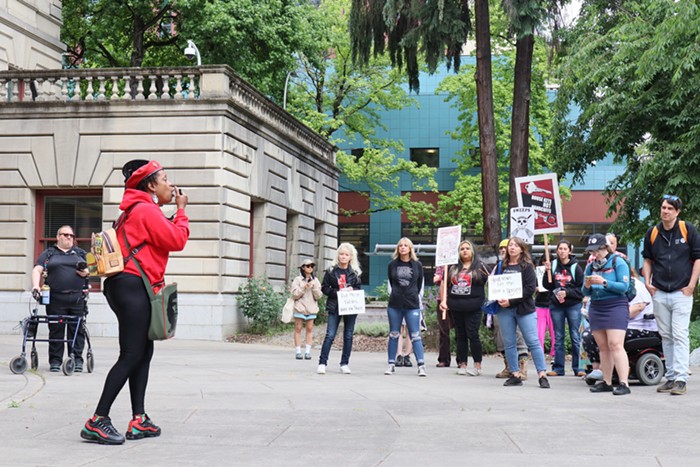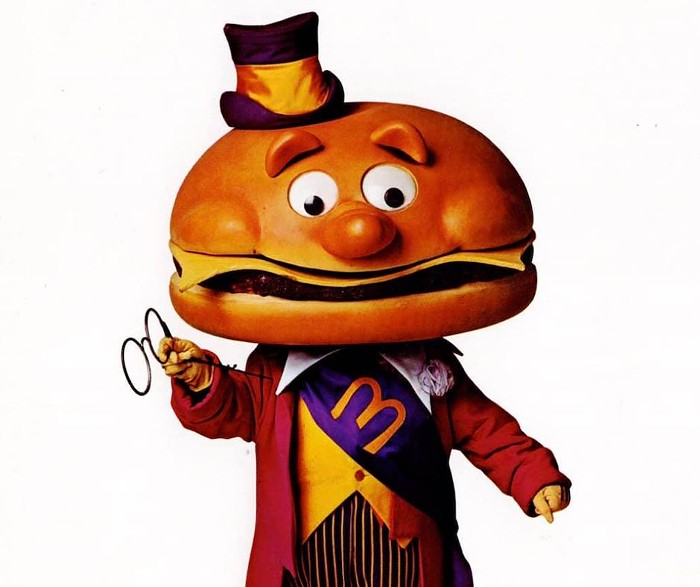James Ellroy
(Knopf)
Thursday, June 12th
Twenty-Third Avenue Books 1015 NW 23rd, 224-5097
James Ellroy is the premier literary stylist working in the mystery genre today. He's the James Joyce of literary mysteries, concocting a unique style to accommodate his dire world view. He writes prose of such immediacy, freshness, hardness, and acuity that all other genre writers seem pallid, bloated, boring, and immature by comparison. While Ellroy's American monsters are leading terrorist charges on the American dream, most of his competitors are still counting the clues that place the parson's corpse in the garden before midnight.
He achieves his style by paring his sentences down to nubbins. The key thing for him is to simplify. It's the Western Union school of writing; his sentences sound like Variety headlines. A longish sentence may actually use four words. At five words he strays into Hemingway country. A six-word sentence is his version of a Henry James novel. A seven-word sentence out of Ellroy is positively Proustian. Ellroy writes as if he's being charged by the word.
Dialogue, however, is exempt from this straightjacket. Ellroy's characters talk quite a bit, in Ellroy's version of '50s hipster and crime lingo. What they talk about, in American Tabloid and its recent sequel, The Cold Six Thousand, the second of a trilogy, is taking over the world.
Inspired by Don DeLillo's Libra, Ellroy has forged a hidden, oral-ternative history of postwar America. Or maybe it's not so alternative. In Ellroy's conception, an uneasy alliance of mobsters, CIA operatives, and high officials, including Hoover, essentially manipulate public events to satisfy their various--sometimes conflicting--ends, in a series of scenarios that will be familiar to readers of contemporary histories and political bios. The Cold Six Thousand begins about 30 seconds after its predecessor.
Ranging from Dallas on November 22, 1963 to Memphis in 1968, the narrative is like a bead necklace, linking all the major events of a five-year period. Like American Tabloid, the book follows a trio of manipulators through most of the significant political and cultural events of the time. Having killed off one of the first book's trio of lead characters, Ellroy introduces a new character to keep the pattern going in the new book. He's named Wayne Tedrow, Jr. Brash, clouded, driven, he's the Ed Exley equivalent from L.A. Confidential's similar template. The Vincennes character is Ward Littell, a former FBI man who now works for Howard Hughes, the mob, and Hoover all at once.
Pete Bondurant is an updated Bud White. He's a homicidal French-Canadian, the thug brought in to administer underground justice. Together and alone, these three assassinate politicians, traffic in guns, and drugs, and turn Vegas into a carnival of sin. Despite the brilliant prose, and Ellroy's continuing fascinating exploration of triplicate leading characters and the tensions between fathers and sons, and mentors and acolytes, the reader can't escape a feeling of water-treading. Ellroy's been there, done that, so what's the point of all this? If Ellroy has a conspiracy theory, what is his thesis?
But then, this is the middle panel in a triptych. To find how Ellroy wants all this to come together, we'll have to wait for the third and final part, which will probably come out in 2007.














